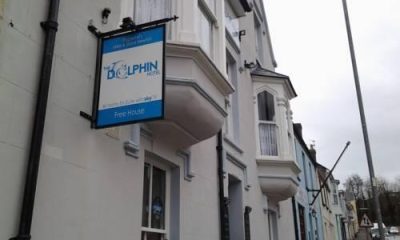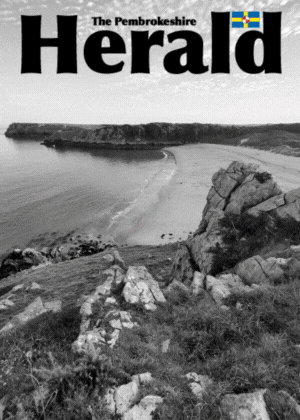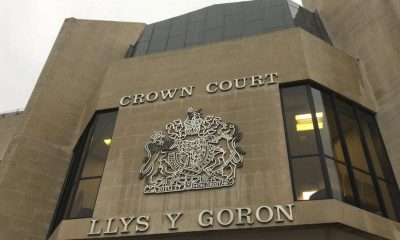Community
Radon Gas lurks in Pembrokeshire’s tranquil landscapes
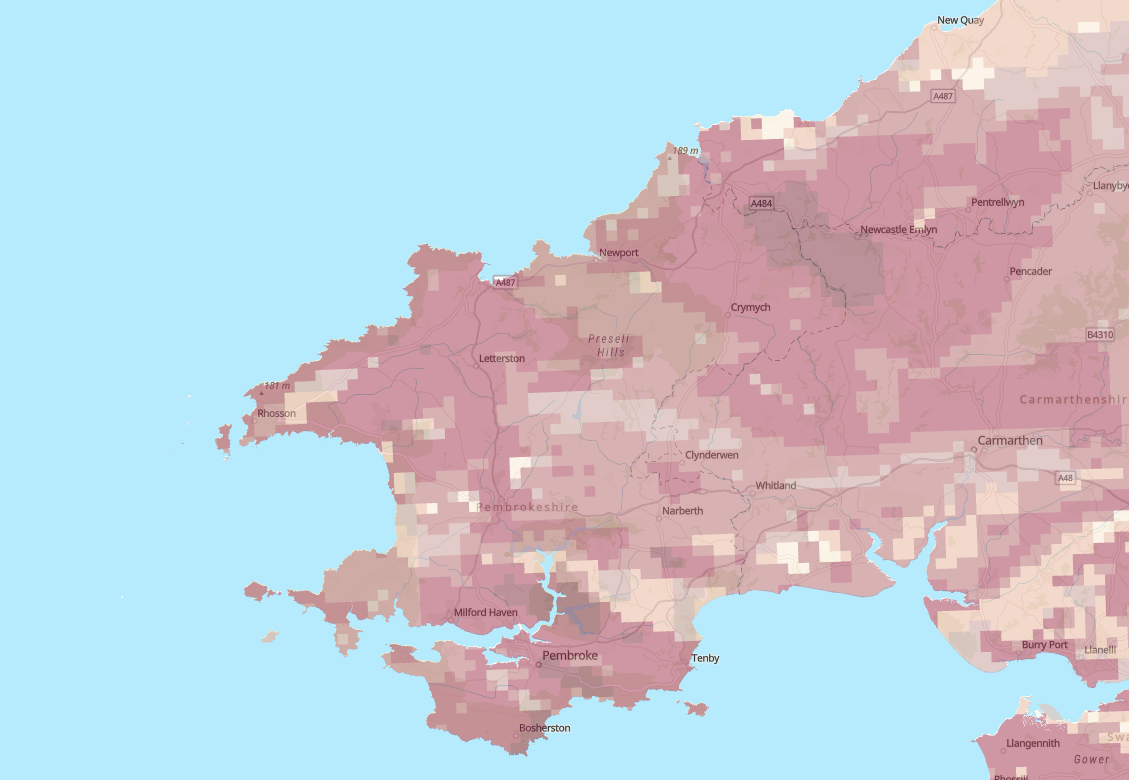
Pembrokeshire, often overshadowed by more common concerns, holds a hidden threat: radioactive radon. This natural gas, lurking in the earth, carries a sinister risk, elevating the spectre of cancer among those unknowingly exposed.
Radiating from the ground beneath our feet, radon infiltrates every building, its presence more pronounced in certain regions, dictated by geological quirks. A recent initiative by the UK Health Security Agency provides an illuminating tool: an interactive map, revealing the lurking presence of radon in our neighbourhoods. Through a spectrum of shades, the map delineates areas of peril, with darker hues signalling a greater than one in three chance of radon intrusion, while lighter tones offer a reprieve, indicating a risk of less than one in a hundred homes.
In the tranquil expanse of Pembrokeshire, where verdant landscapes stretch uninterrupted, one might assume safety from such urban perils. Yet, contrary to expectations, the region exhibits a concerning prevalence of radon, outstripping even the bustling metropolises of London, Birmingham, and Manchester. However, it falls short of the heightened risk faced by rural counterparts like Cornwall and Derbyshire.
Within Pembrokeshire’s borders, a mosaic of risk emerges. Tenby, Milford Haven, Pembroke, and others hover in the 10-30% bracket of maximum radon potential, while Saundersfoot resides in the 3-5% range. On the fringes, Hook and Broad Haven bask in a relatively low risk, boasting a mere 1-3% potential. Yet, amidst the picturesque landscapes, enclaves such as Stackpole and areas south of Buckspool cast a darker shadow, harbouring a potential of over 30%.
But what exactly is radon gas? This silent intruder, devoid of colour or scent, stealthily penetrates homes, a by-product of radioactive decay in subterranean minerals. Its radioactive emissions pose a perilous threat, particularly to lung tissue, leaving a chilling legacy of lung cancer in its wake.
The question looms: How perilous is radon? Ukradon warns of its insidious nature, its radiation quietly wreaking havoc on vulnerable tissues. The real danger lies in its invisibility, easily inhaled and ensnared within the lungs, where it sets the stage for cancer’s cruel advance. Duration of exposure serves as the harbinger of risk, with prolonged contact amplifying the peril.
So, what recourse do we have? Prevention begins with awareness. A Radon Risk Report, available for a nominal fee from the UK Government, unveils the threat lurking beneath our feet. For those at risk, a simple procedure unfolds: detectors dispatched to monitor radon levels in the home, offering a lifeline of awareness in the face of this silent menace. Yet, even as we take these precautions, let us not forget the compounding risk posed by smoking, a potent catalyst for radon’s deadly dance.
Interactive map here: https://www.ukradon.org/radonmaps/
Community
Crowds line streets as tractor run hailed a festive success
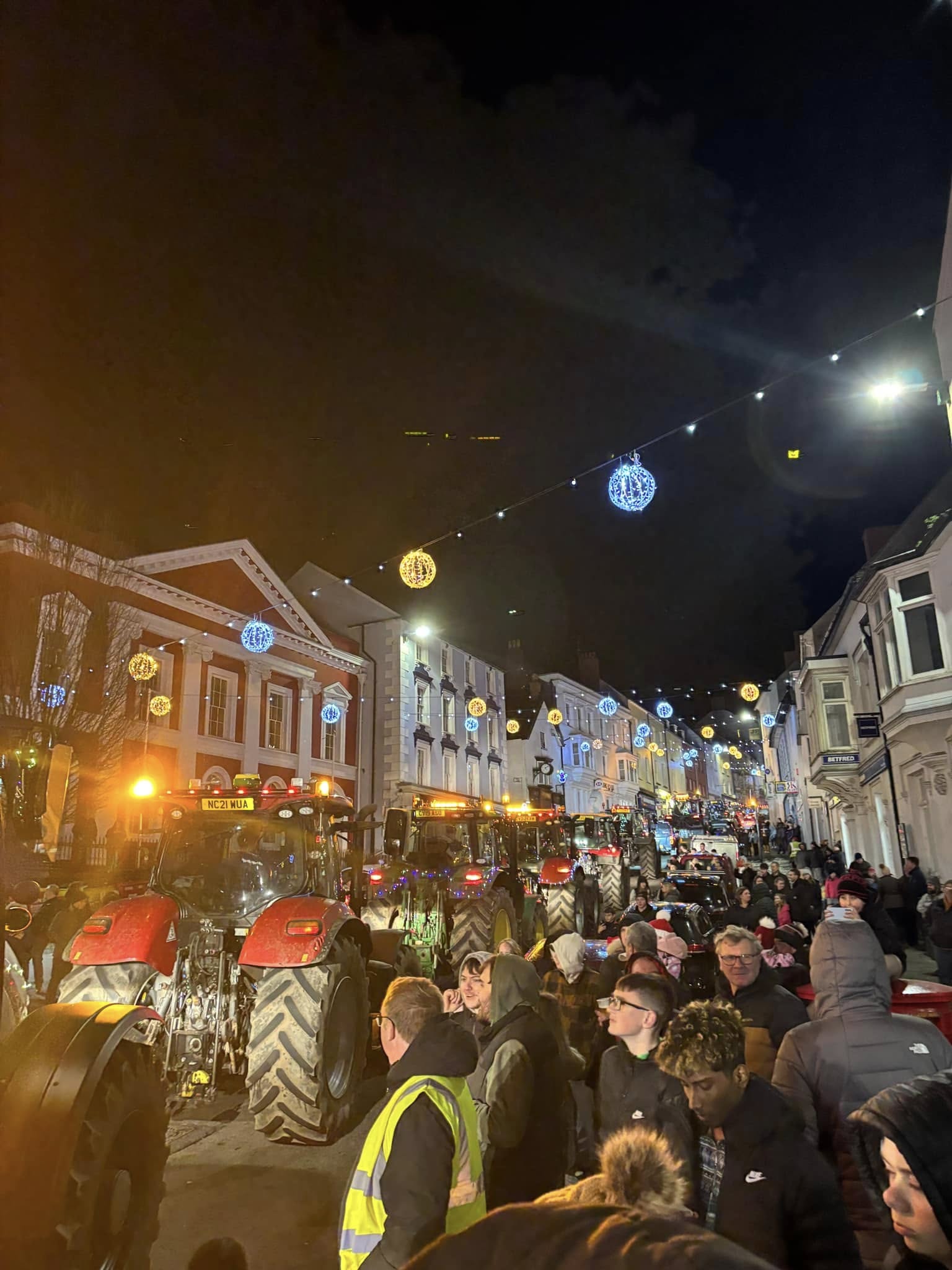
CROWDS lined streets and pavements across Pembrokeshire on Saturday evening (Dec 20) as Clarbeston Road AFC’s illuminated Christmas tractor run was hailed a resounding success.
More than 200 tractors took part in the event, travelling through villages and towns including Newmoat, Maenclochog, Llys-y-frân, Walton East, Clarbeston Road, Wiston, Newbridge, Poyston Cross, Crundale and Haverfordwest, where large crowds gathered to watch the festive convoy pass through.
Families, children and residents wrapped up against the cold to enjoy the sight of tractors decorated with Christmas lights and festive displays, with applause and waves greeting drivers as they made their way through built-up areas and rural roads alike.
The convoy set off from the Clarbeston Road AFC Knock Playing Fields at 5:30pm and concluded at the County Showground in Haverfordwest later in the evening. At the end of the run, refreshments were available and the raffle draw took place at the Park House building, which was open to the public.
Organisers said the turnout from both drivers and spectators exceeded expectations, with the event once again bringing communities together while raising funds for local causes, including The Catrin Vaughan Foundation, In It With Isaac, and Wales Air Ambulance.
Clarbeston Road AFC thanked tractor drivers, volunteers, sponsors and members of the public for their support, as well as residents and road users for their patience while the convoy passed through.
The illuminated tractor run has become a firm fixture in the local festive calendar, with Friday night’s event described by many spectators as one of the best yet.

Community
Charity tractor and car run set to raise funds for Macmillan and Paul Sartori

A CHARITY tractor and car run in memory of Charles Rees is set to take place in Pembrokeshire later this month, with funds raised supporting Macmillan Cancer Support and Paul Sartori Hospice at Home.
The Charles Rees Tractor & Car Run will be held on Sunday, December 28, 2025, starting and finishing at Dudwell Farm in Camrose.
Participants are being invited to “start their engines” in aid of the two charities, with gates opening at 9:00am and the convoy leaving promptly at 10:30am. Organisers have confirmed that the run will operate with no halfway stops, returning to Dudwell Farm at the end of the route.
The event will begin and finish at Dudwell Farm, Camrose (SA62 6HJ), and is open to tractors and cars. Registration and cash payment will take place on the day, with the price to be confirmed nearer the event.
Additional donations can also be made locally in the run-up to the event at Camrose Country Hardware and Croesgoch Stores.
The run has been organised to raise money for Macmillan Cancer Support, which provides vital care and assistance to people living with cancer, and Paul Sartori Hospice at Home, which supports patients and families across Pembrokeshire during some of the most difficult times of their lives.
Organisers say more information will be released closer to the event and are encouraging the local community to support the run, whether by taking part, donating, or lining the route to show support.
The event is expected to attract strong local interest, continuing Pembrokeshire’s tradition of community-led fundraising in support of much-valued charities.
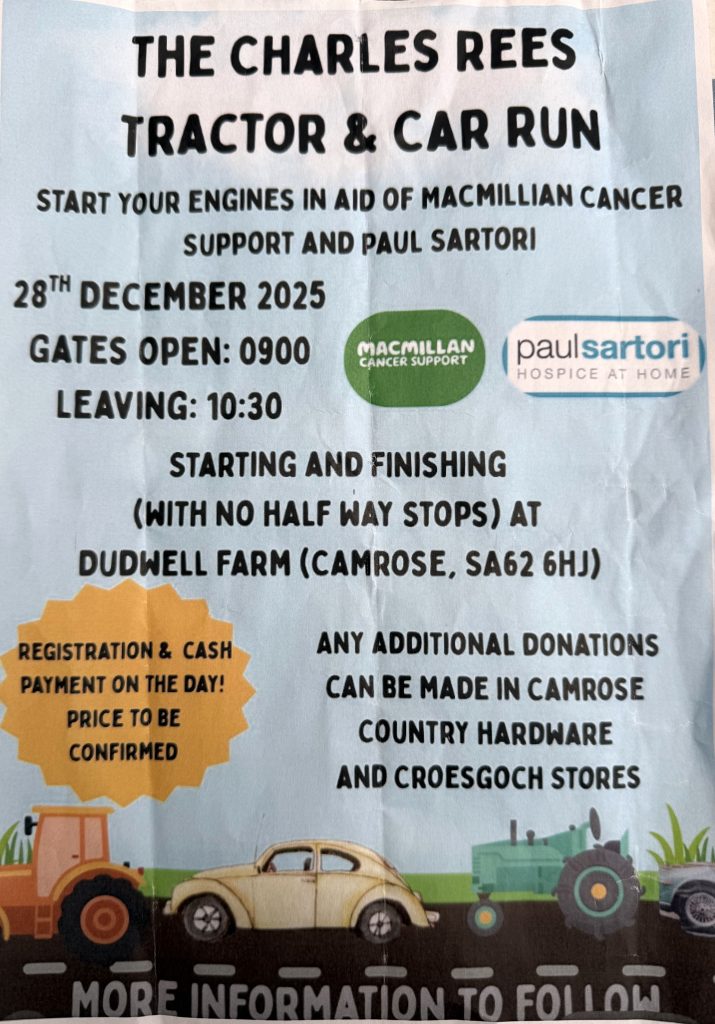
Community
Cilgerran school could be discontinued as consultation launched

A CONSULTATION on proposed changes for a north Pembrokeshire school, which attracted a near-400-strong petition in opposition to the council, has been launched.
At its May meeting, Pembrokeshire County Council considered a report of the School Modernisation Working Group which outlined the findings of a review of education provision in the Preseli area.
“In particular, the review considered the extent of surplus school places in the area, set against a significant decline in the pupil population,” the council in its consultation on proposals for discontinuation of Cilgerran Church in Wales Voluntary Controlled School has said.
A later July meeting of the council, following May’s agreed consultation with St David’s Diocese, backed a general consultation to discontinue Cilgerran Church in Wales Voluntary Controlled School, and to establish it as a 3-11 community school.
The consultation was launched on December 16 and runs to January 30.
Hundreds have opposed the proposed changes, with a petition, on the council’s own website opposing the changes recently closed after gaining 391 signatures.
Any petition of between 100 and 499 signatures triggers a debate at one of the council’s Overview and Scrutiny Committees, and any over 500 a debate at full council, meaning this petition will be heard by committee members at a later date.
The proposals for Cilgerran are part of a wide range of potential education changes in the county.
Two petitions, opposing the potential closures of Manorbier and Ysgol Clydau schools, were recently heard at full council and a further petition opposing the potential closure of Stepaside School has recently been launched.
The Cilgerran e-petition, created by Louise Williams, raised concerns including the school could become part of a federation, a loss of permanent head teacher on site, a shared head teacher would have to oversee several schools, loss of funding control and the ability to maintain the school’s current healthy and stable funding, and a loss of commitment to the church, in turn could impact on the school’s and pupils values, beliefs and cultural beliefs.
It said: “Ysgol Cilgerran VC school has strong links with the Church community in Cilgerran and we believe this will have a negative impact on the children who attend the school, the community of Cilgerran and the links between the two.
“We are proud of our school ethos and values which are strengthened by our links with the church. The school has close and strong relationships with our Church in Wales federation governors one of which is also our safeguarding governor.
“Our Church Federation governors work closely with the school and are regular visitors to the school and the children. They provide vital support and guidance to the school and have a positive impact on the Children’s education. We believe these links will be weakened by this proposal to remove our VC status and we believe this is an un-necessary action.”
-

 Crime3 days ago
Crime3 days agoMilford Haven man jailed after drunken attack on partner and police officers
-

 News6 days ago
News6 days agoDyfed-Powys Police launch major investigation after triple fatal crash
-

 Crime3 days ago
Crime3 days agoTeenager charged following rape allegation at Saundersfoot nightclub
-
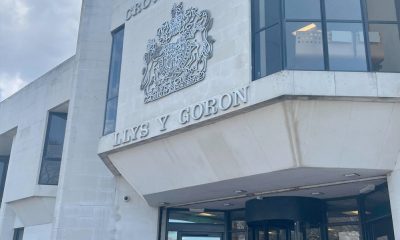
 Crime4 days ago
Crime4 days agoMan charged with months of coercive control and assaults
-

 Crime5 days ago
Crime5 days agoMan sent to Crown Court over historic indecent assault allegations
-
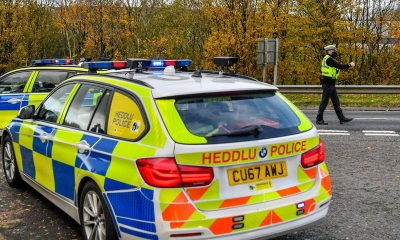
 Crime5 days ago
Crime5 days agoMilford Haven man admits multiple offences after A477 incident
-

 Crime4 days ago
Crime4 days agoWoman ‘terrified in own home’ after ex breaches court order
-

 Crime6 days ago
Crime6 days agoTrefin dog case ends in forfeiture order after protection notice breach














